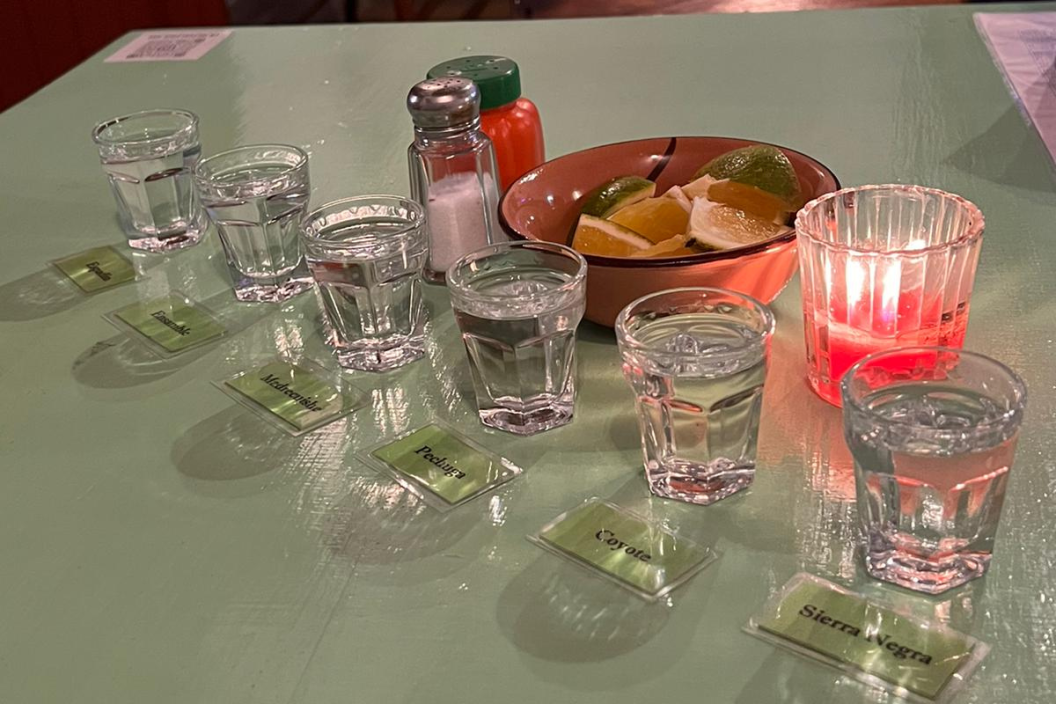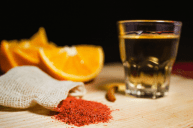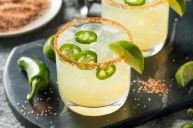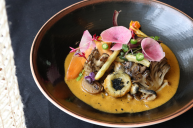From shots to margaritas, tequila is a Mexican liquor that most Americans are very well-acquainted with. Whether you love a tequila shot with salt and lime or you downed one too many during your college days, you've likely had enough experiences to know you feel about this popular liquor. Mezcal, on the other hand, is seen as many as tequila's smoky cousin and is less well-known. To better understand this tasty liquor, here are the main types of mezcal and what I discovered mezcal tasting in the "capital of mezcal."
What is Mezcal?
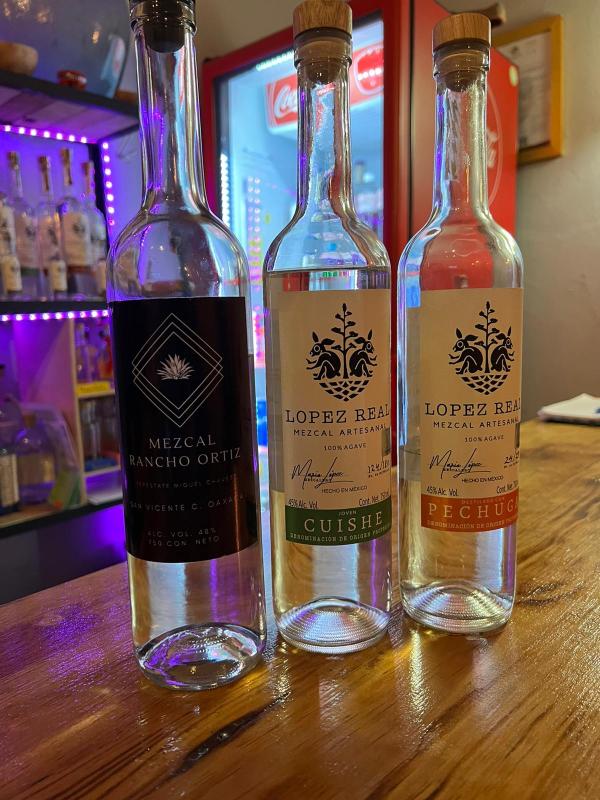
Lydia Greene
Although describing mezcal as the smoky cousin of tequila is an easy way to understand it, it's an oversimplification of this complex and varied liquor. There are many varieties of mezcal based on how it's prepared, and tequila is actually a mezcal, rather than the other way around. Specifically, tequila is the mezcal made from the blue agave plant, or agave tequilana, just one species of the agave plant that mezcal is produced from.
The main types of mezcal are industrial, artisanal, and ancestral. Each has different methods of production and distillation, resulting in distinct flavors. There are also categories of mezcal based on how long it's aged, the main types of which are joven, reposado and añejo. You can read more about the types of mezcal at Experience Agave.
Where is Mezcal Made?
Mezcal production is only allowed in a number of different Mexican states, making it even more unique. Oaxaca is the most well-known of these states, and is known as the capital of mezcal. In fact, over 90% of the mezcal in the United States comes from this part of Mexico. The other 8 states where mezcal is produced are Durango, Puebla, Guerrero, Michoacán, Zacatecas, San Luis Potosí, Tamaulipas, and Guanajuato.
As someone who loves mezcal and anything having to do with it, the fact that I needed to go to Oaxaca and do a mezcal tasting when I was in Mexico was undeniable. This led me to a hole-in-the-wall mezcal shop called La Mezcalería, which essentially means "the place where you make mezcal" in Spanish.
La Mezcalería is a little mezcal shop in the center of Oaxaca City, a haven to get out of the hustle and bustle of traffic and activity, where you can try high-quality artisanal mezcal from Oaxaca. The mezcals available are made by different mezcaleros, or mezcal producers, and they're made in a variety of ways.
I chose this mezcalería to get a local experience and because this lesser-known mezcal shop focuses on mezcal producers who use techniques passed down through generations. Plus, all of the available mezcal is produced within the state of Oaxaca.
The Mezcal Tasting
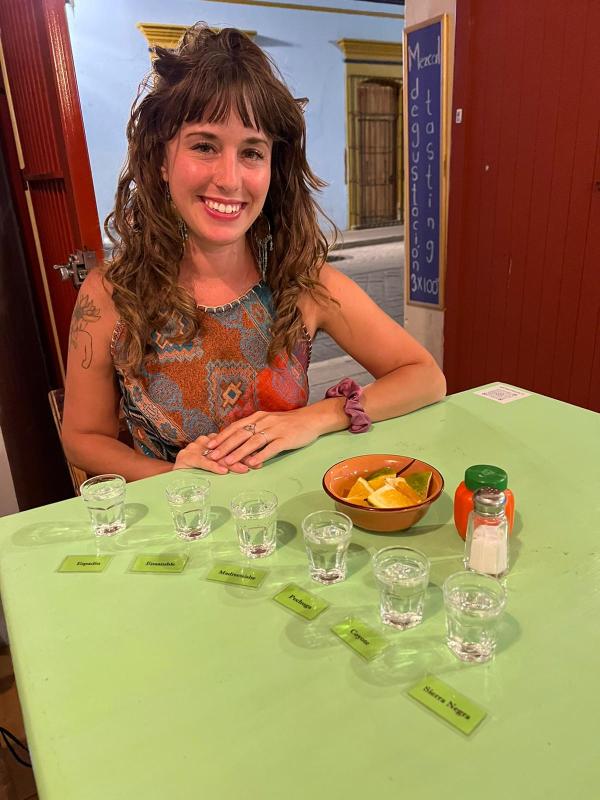
Lydia Greene
Upon walking in, I could already feel that this mezcal shop would offer me an authentic experience for my mezcal tasting. I brought a friend to have a second opinion (and in case the mezcal tasting made me a little too tipsy to be out on the streets of Mexico alone).
We decided to taste three varieties each, and asked the owner to choose his favorites for us. He lined up six mezcal shots and proceeded to explain each, giving background about the distillation process, the flavors of the mezcal, and the cultural context of each variety.
He advised us not to drink the mezcal like tequila, but instead to drink it slow, smell it, taste a little bit, let the flavor seep into your mouth, and then start to drink it bit by bit. We took his advice and thoughtfully tasted each mezcal, using an orange in between to cleanse the palate.
Here's what we learned about these artisanal mezcals in the capital of mezcal!
Espadin
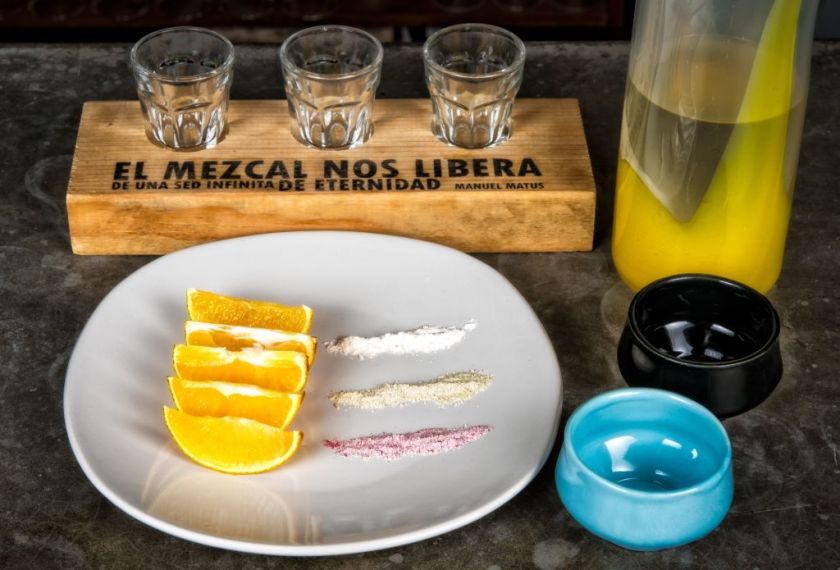
Getty Images/OMAR TORRES
The owner of La Mezcaleria explained that Espadin mezcal is made from the most common type of agave, one that is known all over the world. This agave species takes 5 years to grow until it's ready to be made into mezcal, a relatively short time compared to other agave plants.
I was already familiar with Espadin, having had my fair share of nights out in Mexico. Espadin is the mezcal you can find on any menu, that bartenders will suggest as a go-to, and it ranges from smooth and delicious to just barely being drinkable. My friend's immediate response to his taste was "it tastes like gasoline," if that tells you anything. The Espadin that La Mezcaleria served us was sharp and something we would rather take shots of than sip the way mezcal is meant to be drank.
Ensamble
Ensamble essentially means a mix in Spanish, so this mezcal was actually a combination of three agaves- Espandin, Cuishe, and Tepextate (or Tepeztate). The third variety, Tepextate, is a special one because it needs to grow for 20 to 25 years before being ready to be produced into mezcal.
This type of agave is found wild in the mountains rather than being grown, making this mezcal even more unique and hard to come by. We found the Ensamble to be sharp, a bit fruity, and little bit acidic. It tasted more like liquor than most of the mezcal we'd had in Mexico, almost more like tequila than how you'd imagine mezcal to taste.
Madrecuishe
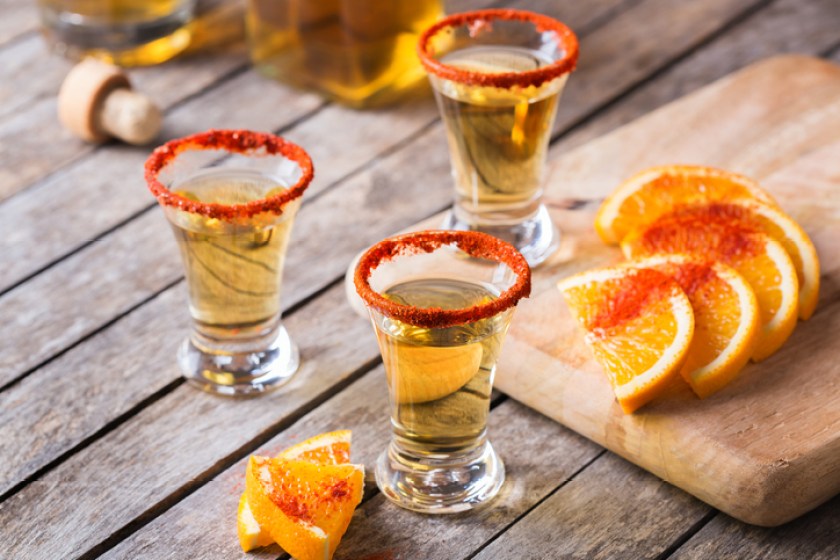
Getty Images/Aamulya
Madrecuise or madrecuixe is made from a very rich, mineral-y agave, and the owner told us that it would smell like wet earth. We found that this kind did indeed have a delicious earthiness to it. It was softer than ensamble, and tasted soft, light and yummy along with its earthy undertone.
Pechuga
Pechuga was the most fascinating mezcal variety for me! This kind is a ceremonial mezcal brand used in special occasions and holidays. The owner explained to us that large amounts of Pechuga mezcal are prepared in the months leading up the Day of the Dead, one of the most important Mexican holidays.
Pechuga means "breast" in Spanish, as in a turkey or chicken breast. Because of this, I was already curious about how this mezcal was prepared. In fact, mezcal de pechuga is made when a finished mezcal is distilled again with other ingredients, and a raw chicken or turkey breast is hung over the still as the mezcal is distilled. The mezcal is said to soak up some of the vapors of the meat, adding to its aroma and flavor.
This particular Pechuga had lots of fruit added into the second distillation, so it smelled very fruity and floral, with notes of peach and apricot. My initial comment was "it smells like I want to wear it." After tasting it, we found that its flavor fully lived up to its delicious smell. The Pechuga tasted sweet, earthy and fruity, and was incredibly smooth and drinkable. My friend's description was "Pechuga tastes like 'can I drink that all night please.'"
Coyote
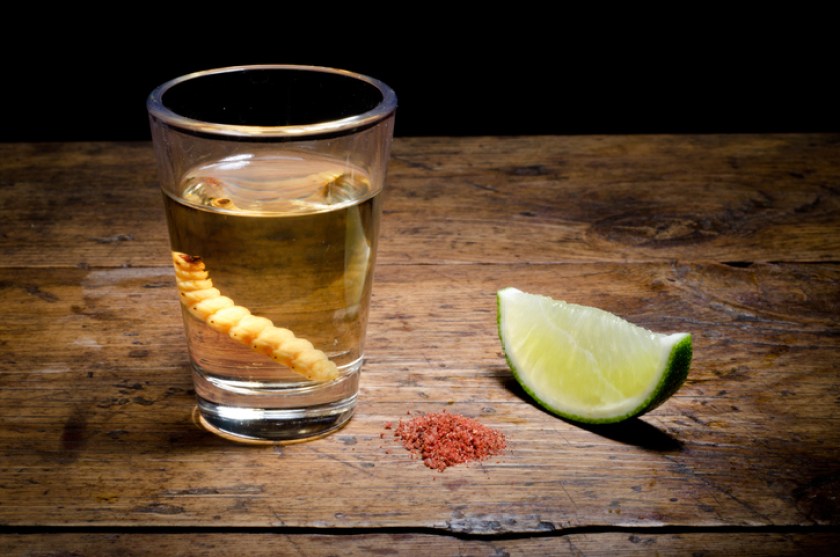
Getty Images/Trifonov_Evgeniy
The next mezcal was called Coyote. We were told that Coyote is made with the variety of agave that's the most difficult to find. Mezcal producers find it growing wild, rather than planting it, which adds a new element of difficulty and distinction.
It smelled intense and a bit strange, almost like a cleaning solution. Upon tasting it, we decided that its flavor was much better than its smell. The front end was shocking and intense, but it was tasty and smooth once it moved around your mouth.
Sierra Negra
Sierra Negra is another mezcal made with a very rare agave plant that's hard to find in Oaxaca. The owner explained that this mezcal is very high quality and is considered on the fancier side because of how difficult it is to find the agave plants.
It smelled amazing. As my friend Jay said, "it smells what I want mezcal to smell like, slightly sweet, smoky, earthy, and doesn't make you feel like there's even alcohol in it." I smelled an herbaceous, grassy aroma with a lot of depth. When we tried it, we found that the flavor matched the scent, and that the mezcal was as herbaceous and warming as the aroma suggested. Jay's description was "Sierra negra is 'give me one on the rocks please and let me sip it while I read my book this evening.'"
Tepeztate
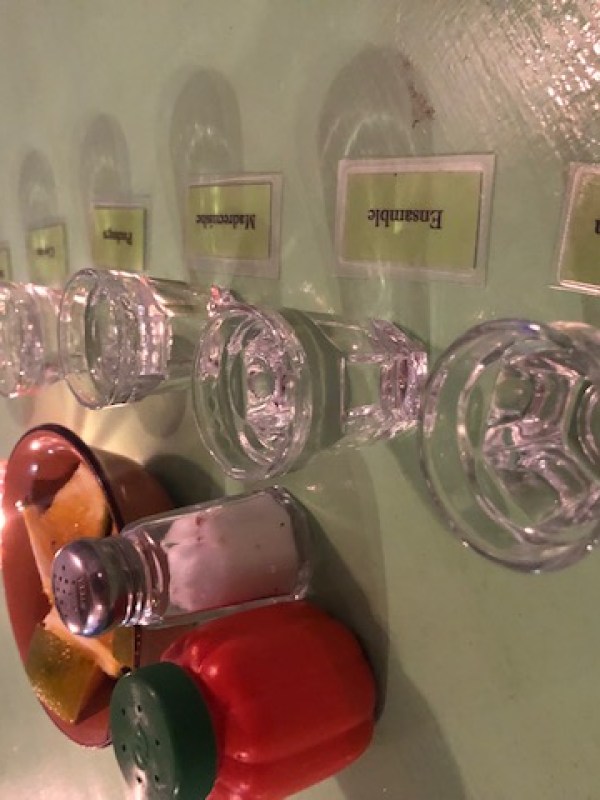
Lydia Greene
After trying the first six, we decided we wanted two more; one that was extra smoky and one that tasted like the Pechuga, which was the best mezcal of the tasting so far. The Tepeztate was suggested to be similar to the Pechuga, so we were excited to give it a try.
It smelled very aromatic and fruity, like the Pechuga. When we sipped it, we tasted the flavor of melon, like a really ripe honeydew or cantaloupe. This was the best mezcal we'd had so far, even surpassing the delicious Pechuga! Jay's description was "Teptztate is 'I'll take this one home with me and drink it all week.'"
Cuishe
Cuishe was the final mezcal, the one the owner gave to us when we asked for a "smoke bomb" mezcal. Although it was hard to follow up something as tasty as the Tepeztate, the Cuishe was delicious in its own right.
I love a good smoky mezcal, but this one was on the line of being a bit too smoky. (I guess that's what you get when you ask for the smokiest mezcal available). However, along with being very smoky, it was drinkable and fruity and was a yummy way to end a mezcal tasting in the place most famous for this smoky, delectable Mexican liquor.
READ MORE: The World's First Whiskey Tequila Fusion Will Knock You Out
